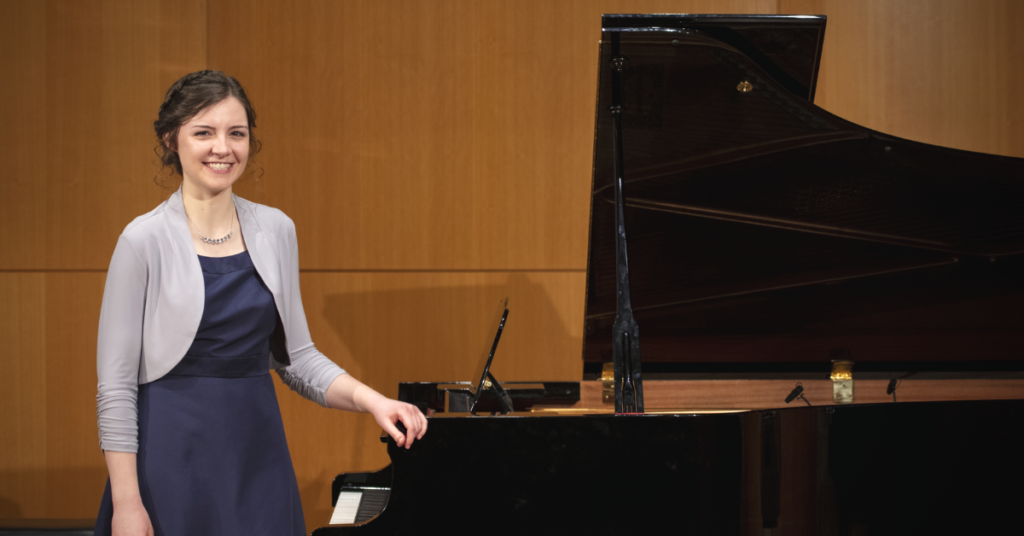Emily Kindstedt’s Piano Recital Highlights
Emily Kindstedt recently performed her senior piano recital. A delight to the ear, Kindstedt’s recital featured many friends as collaborators. Rising to the challenge of her repertoire, Emily’s success can be attributed to her strong work ethic and the fine teaching of June Brus. Her performance evidenced this fact. Dr. David Ledgerwood comments, “Emily has made tremendous strides in her piano skills. The level of her pieces and her phrasing, tone, and execution have substantially improved. The repertoire was difficult, but she worked diligently in mastering it.”
View Kindstedt’s recital photos, and enjoy some of her favorite excerpts below.
The Planets—Jupiter, Holst
This piece is part of a 7-movement suite in which Holst portrayed each planet according to the emotions they supposedly impressed on the psyche. During the brilliant, joyful opening, Emily always imagines the thrilling experience of launching out into space. Suddenly, the momentum slows, and the grandeur and beauty of Jupiter awe the listener as the rich, haunting melody rises from the surrounding suspenseful, playful dissonance. The piece ends by combining the awe-inspiring melody with the spaciousness and brilliance of the beginning. Aptly titled “Bringer of Jollity,” the listeners observe the fun and joy this piece is to play.
Concerto No. 2 in G minor, op. 22, Saint-Saёns
Saint-Saёns’ life was not easy, and the sadness and tension he experienced come through in this movement. Unusual for a concerto, the first movement starts immediately with a cadenza-like, improvisatory piano solo, much like a Bach fantasia. However, the textures quickly change and the extreme contrasts in this piece take the listener on a journey through a variety of emotions. One of Emily’s favorite moments is when the main theme comes back quietly and mysteriously, surprising the listener with an unexpected ending to the piece.
Polichinelle in F# minor op. 3, No. 4, Rachmaninoff
Pulcinella, after whom this piece is named, was a classic puppet character in Italian comedy during the 16th-18th centuries. Rachmaninoff accurately portrays his dualistic character in this piece. He is both intelligent and ignorant, a bumpkin and a “prince,” always the loser but managing to end up on the winning side in the end. He is a shrewd, selfish thief, yet ends up fixing everyone else’s lives in the process. Although he moves laboriously, he often bursts into sudden excitement and action, as is evident in the frequent tempo and mood changes and the sudden leaps on the piano.
___
Emily Kindstedt’s recital was prepared under the direction of June Brus and is given in partial fulfillment of the requirements for a Bachelor of Music Degree with concentrations in Piano Pedagogy and General Music.


